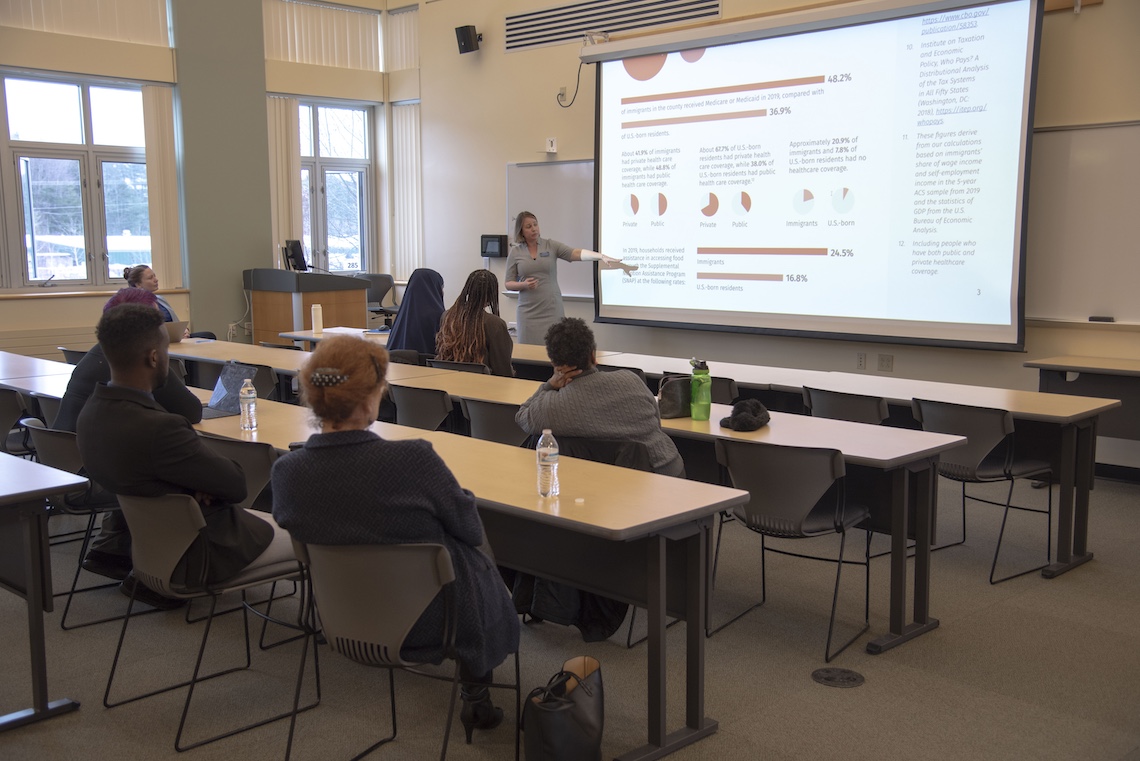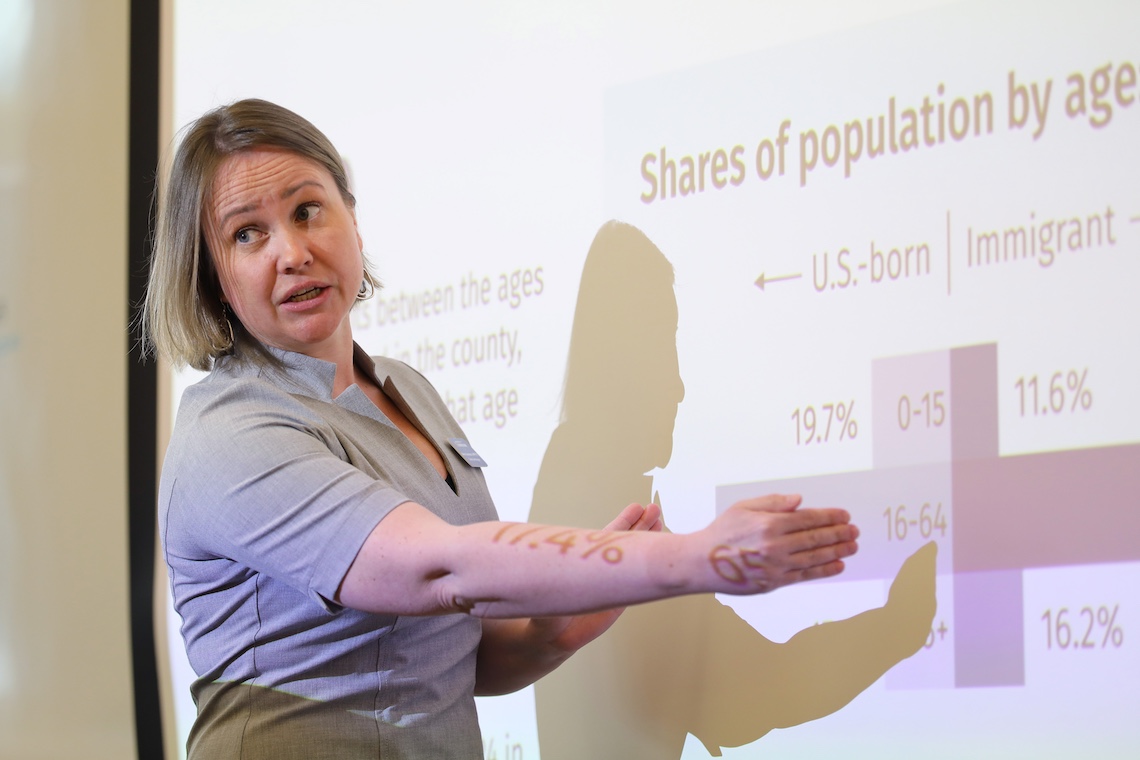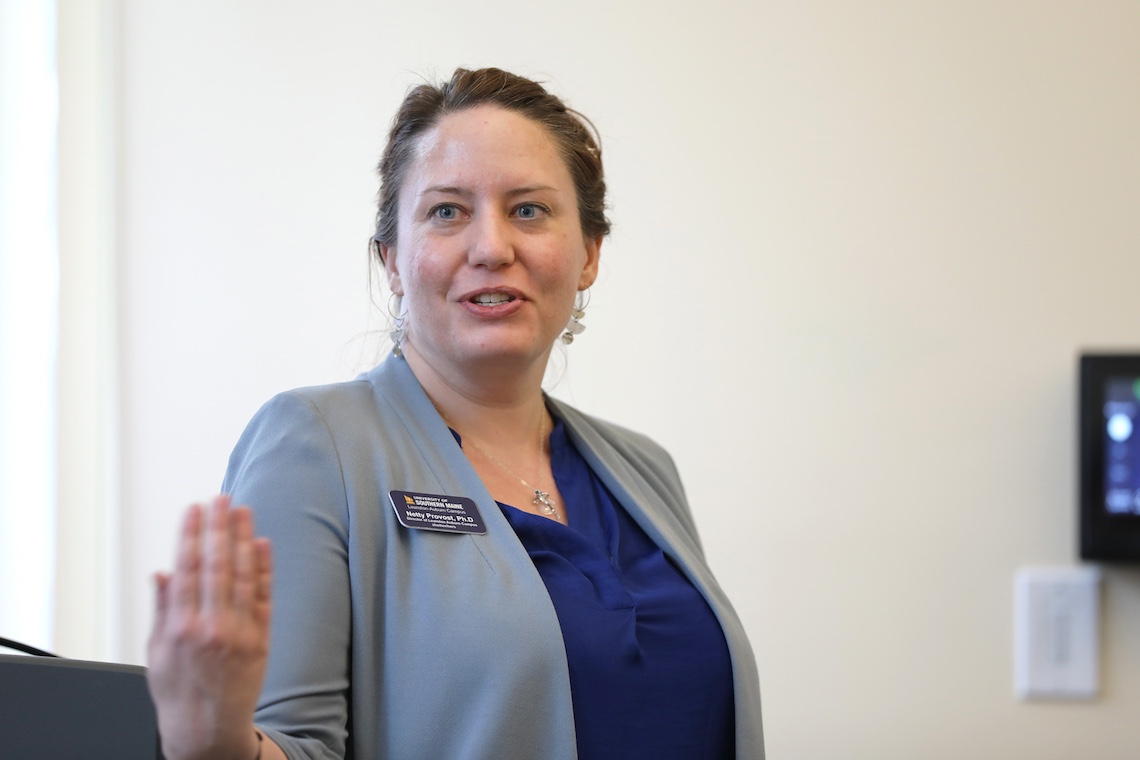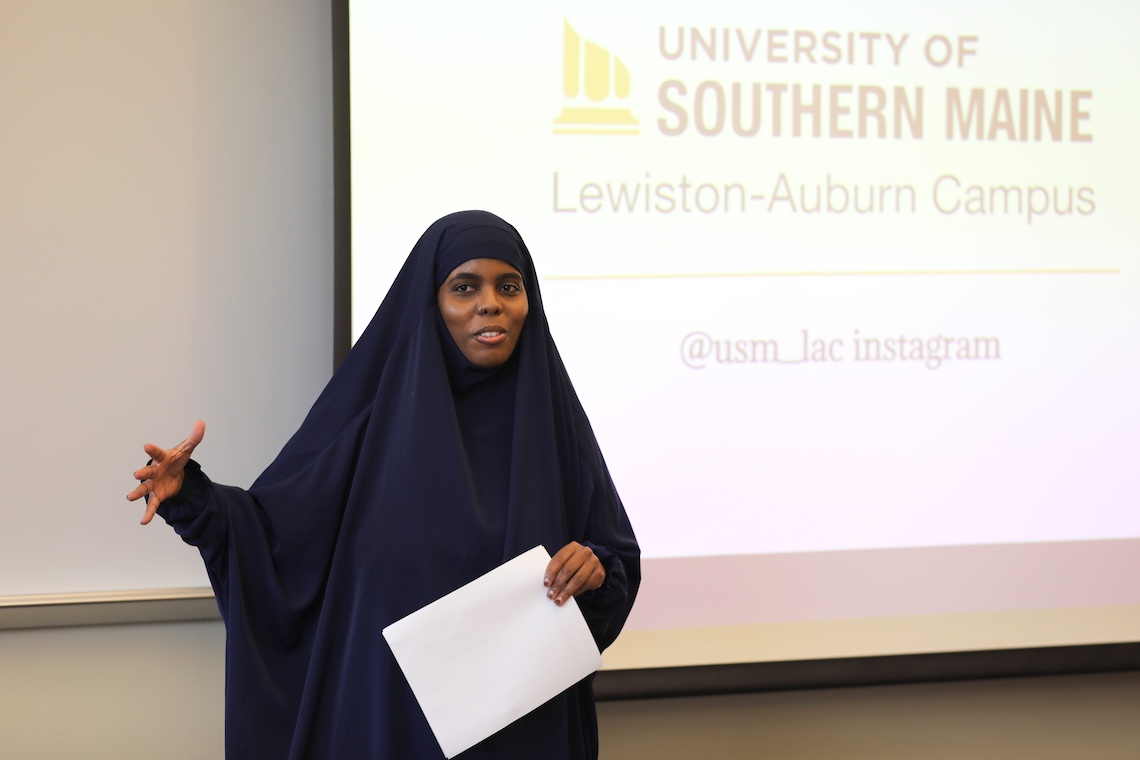
A new demographic report is helping the University of Southern Maine better understand the local immigrant population in order to better serve them.
A presentation explaining the data was held at the Lewiston campus on March 26. It was the culmination of a process that started in 2022 when the University applied to the Gateways for Growth (G4G) program.
Two national organizations, the American Immigration Council and Welcoming America, administer the program to improve immigrant inclusion in communities across the country. Winning applicants receive varying degrees of technical assistance with their stated goals.
USM’s acceptance into G4G was an outlier. The program deals mostly with local government agencies and chambers of commerce. USM made its case as a driver of immigrant success with an application submitted jointly by the Office of Equity, Inclusion, and Community Impact (EICI) and the Career and Employment Hub.
EICI Global Talent Navigator Marina Chakmakchi led the application effort. Her team crafted a tightly focused message. They wanted to tap G4G’s resources to compile a report on trends affecting immigrants in Androscoggin County so that USM’s Lewiston campus can keep pace with the changing needs of its community.

“We need to make sure that this youth is well educated and adds to the workforce, whether it is in Maine or in Androscoggin County,” Chakmakchi said.
The report is available online, but a live presentation allowed Chakmakchi to put the numbers into context and answer any questions that might arise. She provided narration while a slideshow of highlights flashed across a screen behind her.
From 2014 to 2019, immigration accounted for 11.9% of population growth in Androscoggin County. The population would have declined without immigration.
Immigrants were 14.7% more likely to be of working age than the county’s U.S.-born residents as of 2019. Also during that year, foreign-born residents contributed $8.6 million to Social Security and $2.3 million to Medicare.
The 2019 data further reveals that 27.6% of immigrants in Androscoggin County held a bachelor’s degree or higher compared with 22.3% of residents born in the U.S. Lewiston Campus Director Netty Provost pointed to those statistics to show how a degree from USM can help New Mainers fill available jobs in highly skilled fields.

“As the report showed, one of the big industries is registered nurse and health care employment,” Provost said. “USM’s Lewiston campus is our health care corridor, and our Nursing program is a fantastic opportunity for folks who want to enter that industry.”
Guests to the presentation also heard from Amran Osman who offered a student’s perspective on USM’s outreach efforts to immigrants. She is one of four foreign-born students whose profiles appeared in the G4G report to show the real people behind the statistics.
Osman was born in Kenya to parents who fled from violence in Somalia. Her family moved to Lewiston when she was 3 years old. She graduated from USM in 2021 with a degree in Political Science. Today, she runs Generational Noor, a Lewiston-based nonprofit which helps immigrants deal with issues of mental health and substance abuse.
Osman looks back on her time at USM as critical in developing her leadership skills. She outlined the conditions that contributed to her success in the hope they’ll do the same for future students who come from a similar background.

“Have spaces that are open for the community, make sure that voices are heard, and make sure that resources are geared toward different communities within Maine,” Osman said.
Interest in the G4G report extended beyond campus. The Director of Economic Development for the city of Auburn, Jay Brenchick, came to the presentation.
The part of the report that particularly caught Brenchick’s attention showed how immigrants helped preserve or create 200 local manufacturing jobs. If not for their involvement, those jobs would likely have moved elsewhere or been eliminated by 2019.
Those findings line up with Brenchick’s work to recruit immigrant workers. He’s had to navigate language and cultural differences along the way. Brenchick is glad to have research that shows the value of his efforts.
“What I really take away from here is being able to share this information with our elected officials and with our citizens so they realize that immigrants and refugees, New Mainers in general, really add to our economy,” Brenchick said.
University staff, students, and business leaders also filled the audience. Some had questions. Others shared stories about their own struggles and successes within the education system. Conversations like that about the immigrant experience are exactly the kind of outcome the University wanted when it commissioned the G4G report.
“We are a higher education institution, this is our population,” Chakmakchi said. “We want them to know about the Lewiston-Auburn campus, we want them to come here. We want them to get higher education. And we want them to stay here and find good jobs and have families here in Maine.”

